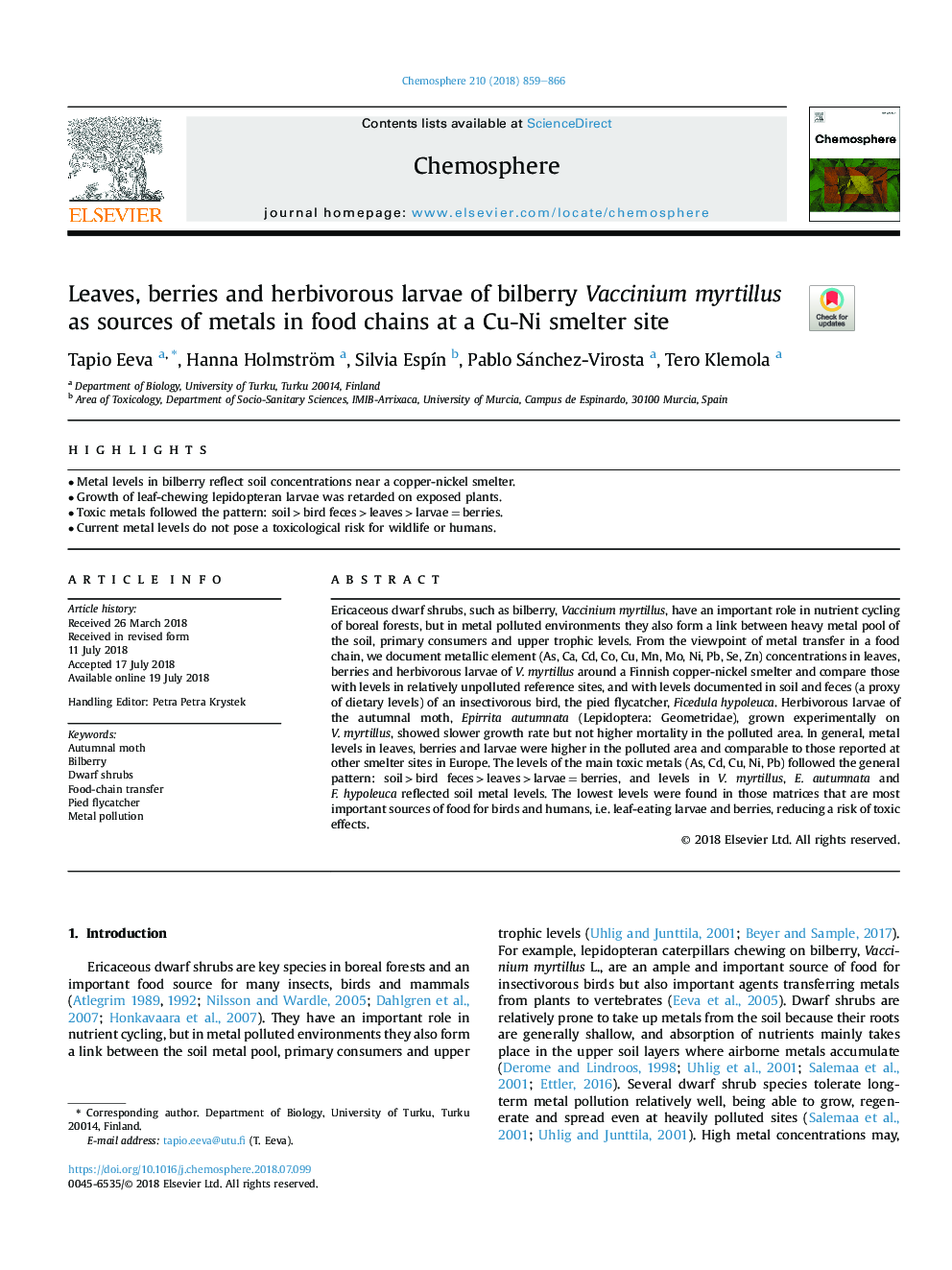| Article ID | Journal | Published Year | Pages | File Type |
|---|---|---|---|---|
| 8850465 | Chemosphere | 2018 | 8 Pages |
Abstract
Ericaceous dwarf shrubs, such as bilberry, Vaccinium myrtillus, have an important role in nutrient cycling of boreal forests, but in metal polluted environments they also form a link between heavy metal pool of the soil, primary consumers and upper trophic levels. From the viewpoint of metal transfer in a food chain, we document metallic element (As, Ca, Cd, Co, Cu, Mn, Mo, Ni, Pb, Se, Zn) concentrations in leaves, berries and herbivorous larvae of V. myrtillus around a Finnish copper-nickel smelter and compare those with levels in relatively unpolluted reference sites, and with levels documented in soil and feces (a proxy of dietary levels) of an insectivorous bird, the pied flycatcher, Ficedula hypoleuca. Herbivorous larvae of the autumnal moth, Epirrita autumnata (Lepidoptera: Geometridae), grown experimentally on V. myrtillus, showed slower growth rate but not higher mortality in the polluted area. In general, metal levels in leaves, berries and larvae were higher in the polluted area and comparable to those reported at other smelter sites in Europe. The levels of the main toxic metals (As, Cd, Cu, Ni, Pb) followed the general pattern: soilâ¯>â¯bird fecesâ¯>â¯leavesâ¯>â¯larvaeâ¯=â¯berries, and levels in V. myrtillus, E. autumnata and F. hypoleuca reflected soil metal levels. The lowest levels were found in those matrices that are most important sources of food for birds and humans, i.e. leaf-eating larvae and berries, reducing a risk of toxic effects.
Related Topics
Life Sciences
Environmental Science
Environmental Chemistry
Authors
Tapio Eeva, Hanna Holmström, Silvia EspÃn, Pablo Sánchez-Virosta, Tero Klemola,
